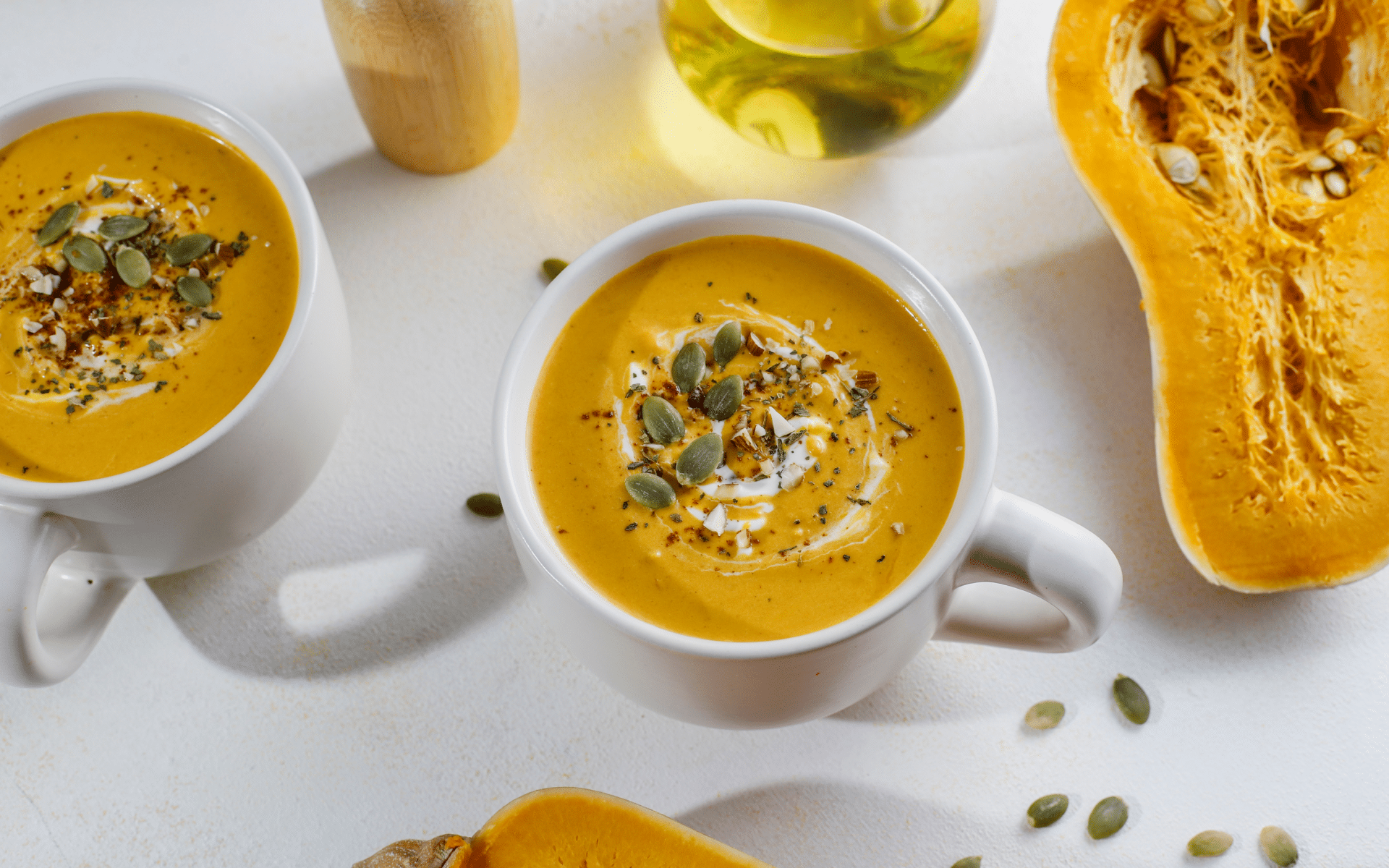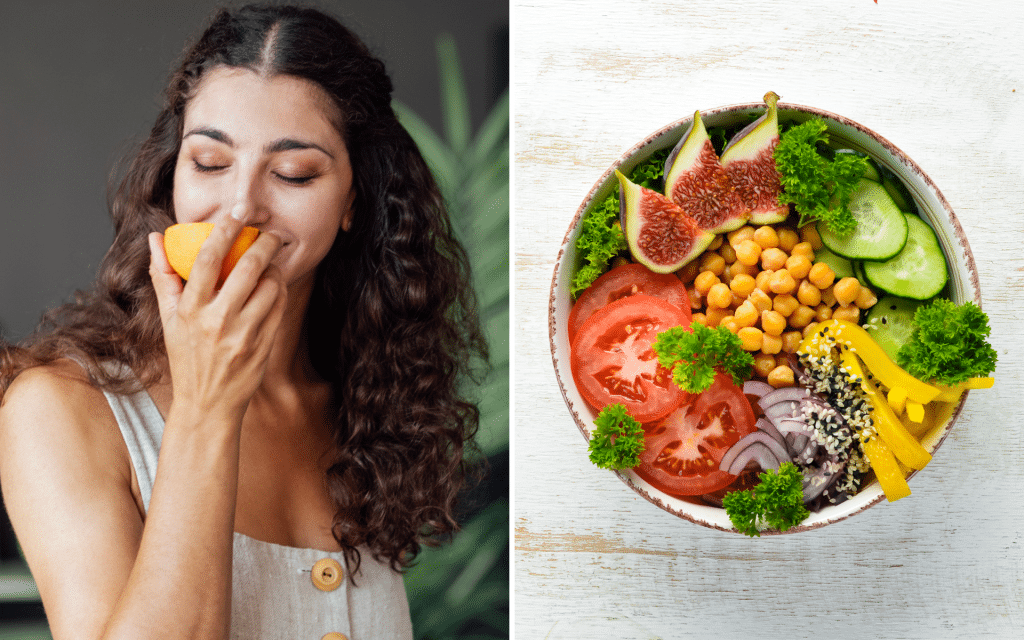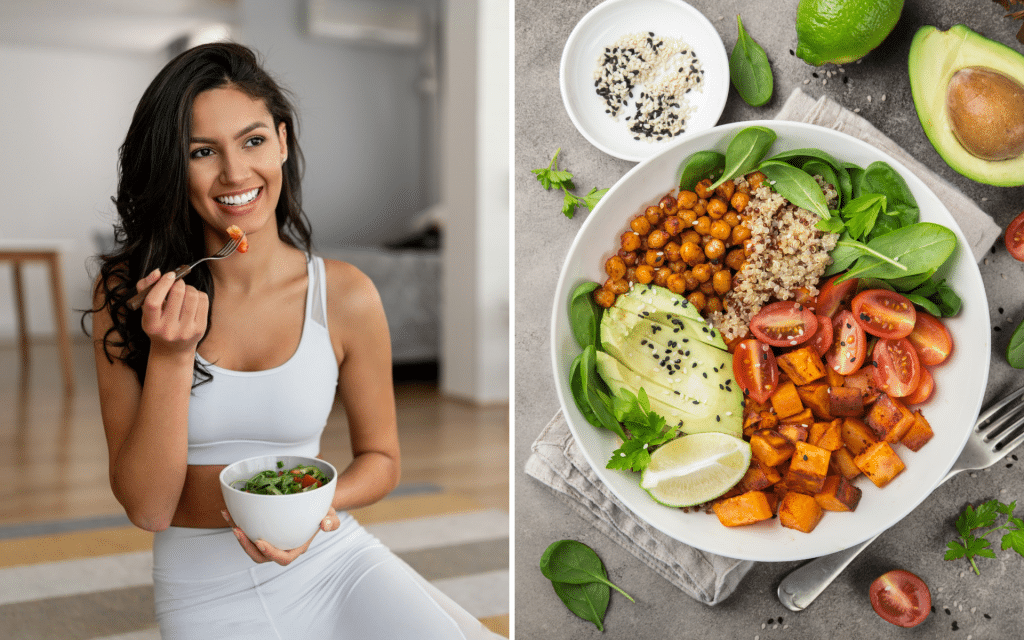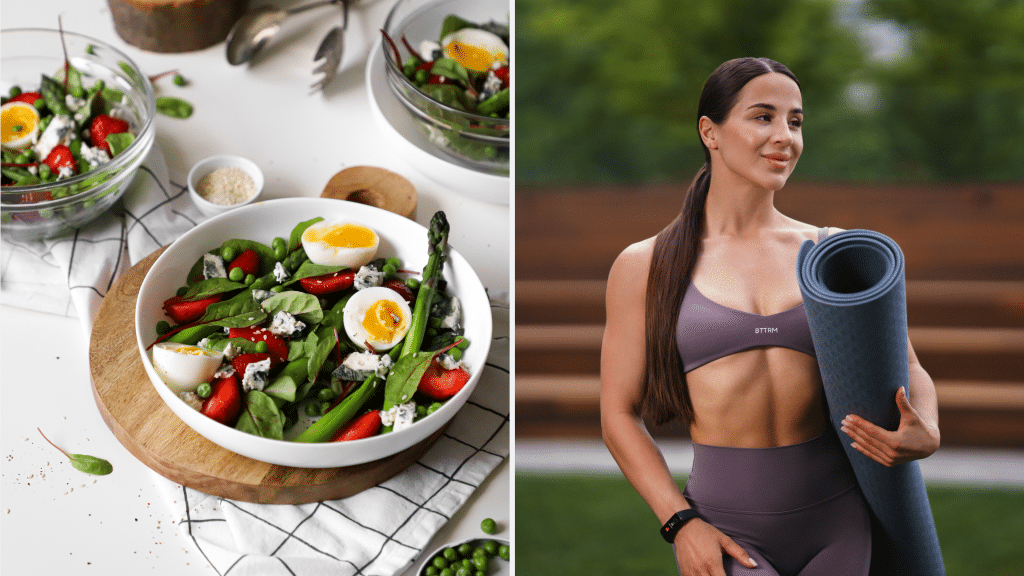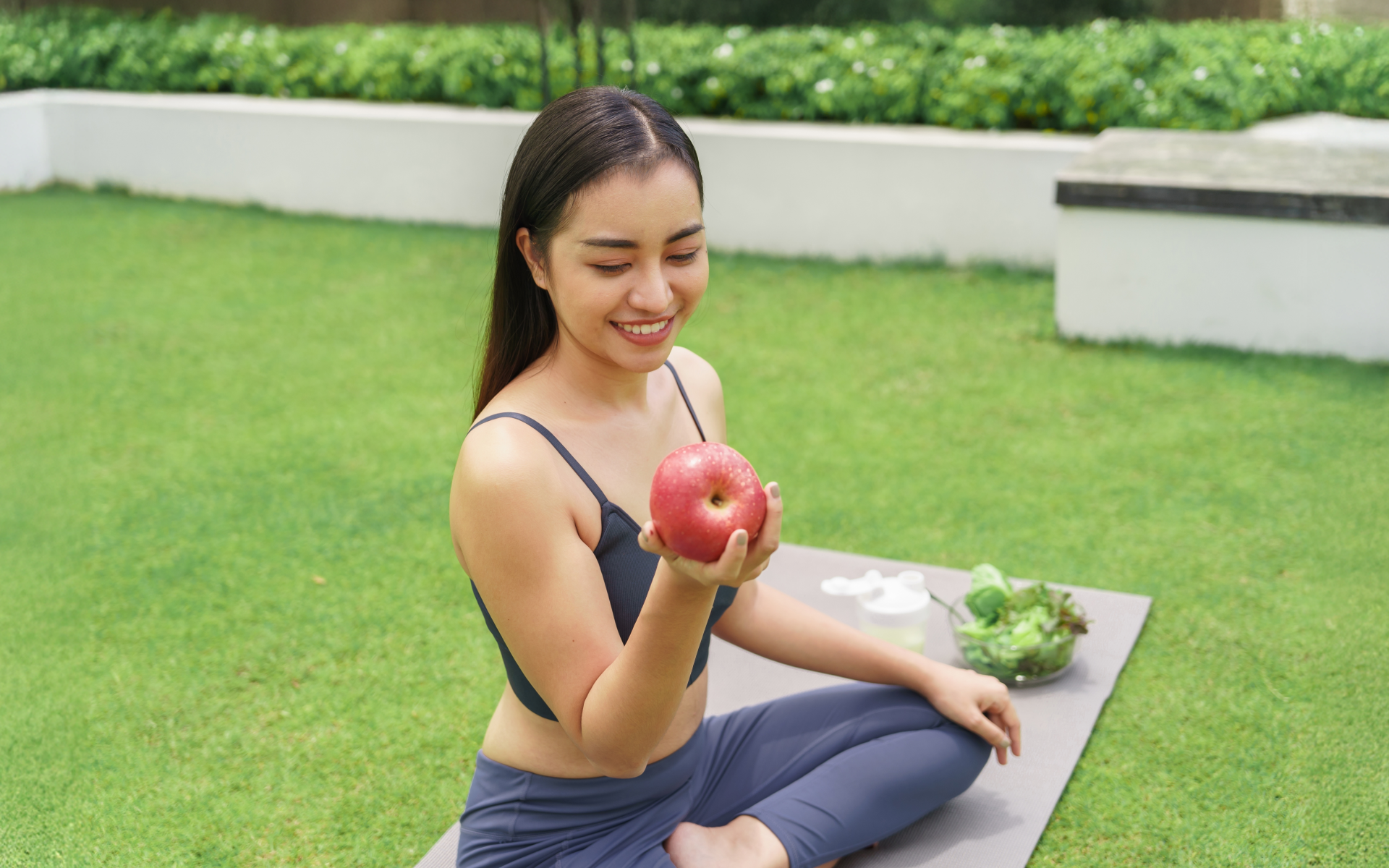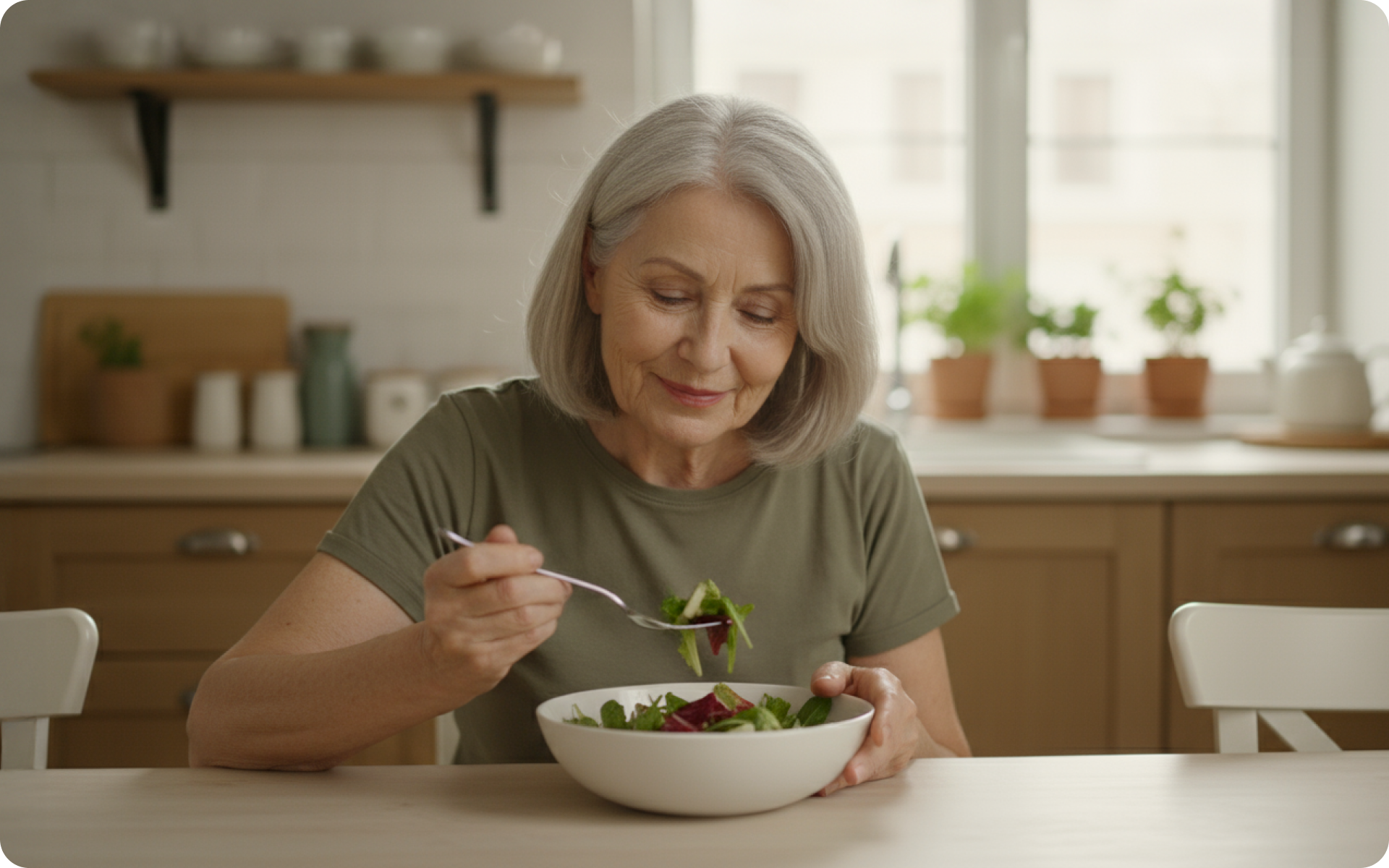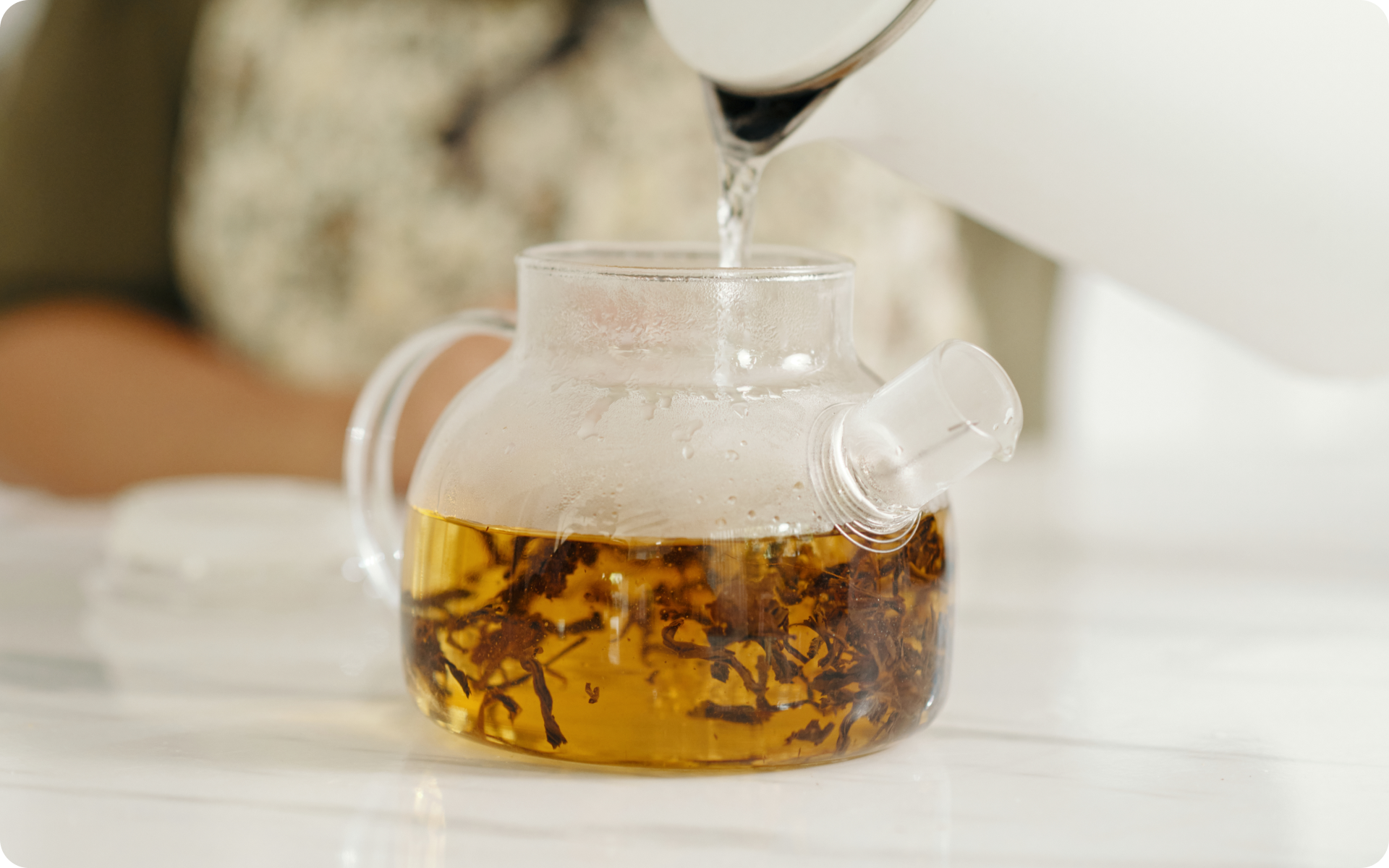Yellow squash is less popular than zucchini, but it’s just as nutritious. As it’s a summer squash, it’s a versatile addition to many recipes. Its skin is thin enough for you to include in your meals, and it tastes mild enough to leave room for rich flavors. If you’ve been wondering why and how you should add this colorful squash to your meals, read on.
Is Yellow Squash Good for You?
Yes, it is. It has various nutrients that make it an ideal addition to a healthy diet.
Here are some of yellow squash’s winning qualities you should consider:
- Low-Carb
A 1-cup serving of sliced, yellow squash contains approximately four grams of carbohydrates (1). Yellow squash is a good option to replace high-carbohydrate foods such as rice, potatoes, and pasta if you’re trying to reduce your carbohydrate intake.
- Low-Calorie
Eating yellow squash is good for your waistline because one cup of this vegetable contains just 21.8 calories (1). If you’re trying to lose weight, yellow squash can help keep your calorie intake low without sacrificing nutrition. It’s also naturally low in fat, so you won’t have to worry about adding too much of this vegetable to your diet plan.
- Full of Fiber
Squash is a vegetable that can help you fight constipation thanks to its fiber content. One cup of this squash contains just over a gram, which helps improve digestion and bowel movement while preventing other gastrointestinal problems such as constipation and hemorrhoids (2).
Fiber-rich foods also manage blood sugar levels and keep them more steady all day long, so you won’t experience sudden energy dips that lead to overeating or unhealthy cravings later in the day (3).
- Good Source of Vitamins
Vitamin A is important for good vision, particularly if you’re indoors most of the time, such as in an office. It also keeps your skin healthy and your mucus membranes strong, which protects your mouth and throat from infections (4).
Yellow squash also provides vitamins A, C, and B6. These nutrients are all essential for keeping your body strong and healthy, so take advantage of them by including this vegetable in your diet plan whenever possible.
- Good Source of Folate
Folate is an essential B vitamin that can help protect fetuses from birth defects, such as spina bifida and brain malformations (although eating yellow squash isn’t a replacement for taking your prenatal vitamin with folic acid). Folate is also important for red blood cell production and helps keep homocysteine levels low, which protects you from heart disease by preventing plaque buildup inside your arteries (8).
- Good Source of Minerals
These minerals are essential for many bodily functions, such as muscle contractions and blood pressure regulation.
Yellow squash contains good amounts of potassium and magnesium. Magnesium may play a role in regulating blood sugar levels by helping improve insulin sensitivity (9). If you have diabetes or impaired glucose tolerance, you can definitely add more yellow squash and other vegetables to your meals, but make sure to continue taking any medication or other treatments your doctor prescribes.
When it comes to weight loss, progress is made by inches, not miles, so it’s much harder to track and a lot easier to give up. The BetterMe: Health Coaching app is your personal trainer, nutritionist, and support system all in one. Start using our app to stay on track and hold yourself accountable!
Health Benefits of Yellow Squash
Consuming yellow squash regularly is good for you as it offers the following health benefits:
- Improved Eye Health
Yellow squash contains beta-carotene, an antioxidant that your body can turn into vitamin A (10). Vitamin A is important for healthy vision as it regulates light receptors in the retina of your eye. It also keeps the mucus membranes around your eyes strong, so they’re more capable of fighting infections caused by bacteria and other pathogens (11).
- Improved Gut Health
The fiber in yellow squash helps improve digestion, prevents constipation, and keeps cholesterol levels down at the same time (2). Thanks to its high water content, this vegetable is also filling without causing any bloating or stomach discomfort.
- Anemia Prevention
Some of the B vitamins in yellow squash are essential for creating red blood cells, which enhance oxygen transport throughout your body. This improves brain function and reduces fatigue as it prevents anemia symptoms such as weakness and shortness of breath (12). However, there are additional B vitamins and minerals such as iron that you’ll also need to get from other foods to prevent anemia.
- Improved Immunity
Yellow squash is rich in vitamin C, a key nutrient for keeping your immune system healthy. This vitamin is essential for synthesizing collagen, which is necessary for the proper function of your muscles and blood vessels. Vitamin C also boosts non-heme iron absorption in your digestive tract, allowing you to fight off anemia more effectively (13).
- Better Heart Health
Thanks to its fiber content, this vegetable may help reduce LDL lipid levels and vitamin C acts as an antioxidant that may help prevent LDL cholesterol from oxidizing and forming plaque in the arteries (14).
Read more: How Many Carbs A Day To Lose Weight?
How to Choose Yellow Squash While Grocery Shopping
When buying yellow squash, you should look for ones that are as fresh as possible. Make sure to choose those with soft skin and vibrant color that haven’t been exposed to cold temperatures for too long.
In addition, select small, firm vegetables as larger ones tend to have tougher flesh. You should also avoid pre-chopped or pre-cut yellow squash unless you plan on using them right away. They spoil much more quickly than whole vegetables once they’re cut open.
Finally, be mindful of the fact that most grocery stores place fruits and vegetables in separate sections. If you want your squash to retain its optimal flavor and texture, don’t leave it anywhere near foods such as meat or seafood as these items may contain bacteria when raw that can contaminate other foods. Put your fresh produce in separate shopping bags from your raw meats and seafoods and store them in separate areas of your refrigerator.
How to Store Yellow Squash After Grocery Shopping
If you’re not going to use your yellow squash immediately, make sure to store it properly to prevent waste and maximize nutrition.
Unwashed yellow squash can last for about a week if stored in your refrigerator’s crisper drawer, but there are certain steps you can take to extend its shelf life even further:
- Keep this vegetable away from other products that emit ethylene gas (such as bananas) as they cause fruits and vegetables to rot more quickly.
- Make sure the stem end is dry before storing it in a plastic bag or airtight container as wet surfaces encourage bacterial growth.
- Wrap cut pieces tightly with aluminum foil or plastic wrap and place them in the fridge to prevent oxidation.
If you’re purchasing yellow squash for home use, consider buying an extra bag or two so it can be frozen for future use.
Simply spread the pieces out on a baking sheet and place them in your freezer until they become firm before storing them in airtight bags or containers. You can keep prepped vegetables like this for up to six months without worrying about freezer burn.
How to Cook Yellow Squash
While it’s true that you don’t need to cook yellow squash if you’re planning on eating it raw, prepping this vegetable is a good way to increase its flavor and texture. In addition, cooking squash first may make it easier for your body to absorb certain nutrients such as beta-carotene (18).
- Steam
If you want to steam or boil yellow squash, simply cut the vegetable into discs or slices before dipping them in boiling water. This process only takes 5 to 10 minutes, depending on the thickness of your pieces, so be mindful of their consistency as they cook.
- Roast
You can also roast yellow squash whole at 400 degrees Fahrenheit for 15 to 20 minutes or until tender. Just make sure not to overcook them as high heat can degrade some important compounds such as zeaxanthin and lutein.
- Grill
Another good way to cook yellow squash is on a grill as it makes them taste even better. Simply cut the vegetables in half lengthwise before brushing them with olive oil, sprinkling them with salt and pepper, and cooking them for five minutes per side over medium heat. Keep in mind that too much salt can increase the risk of hypertension (19).
- Sauté
To sauté yellow squash, thinly slice or julienne the pieces before heating up olive oil in a pan set over medium heat. Cook for 4 to 5 minutes until the color starts to intensify, then add garlic or shallots if you want to increase flavor further. You can also add chopped tomato, pesto, balsamic vinegar, or chopped basil leaves at this point to create a delicious sauce.
- Bake
Finally, you can bake yellow squash with olive oil and salt until it becomes tender and caramelized. Just cut your vegetables into bite-sized pieces before coating them with the suggested seasonings and placing them on a baking sheet. Then place the tray inside an oven preheated to 375 degrees Fahrenheit for ten (10) minutes or until they turn brown. Serve hot as a side dish or include these tasty treats in healthy casseroles that will keep you full for hours.
Yellow Squash Recipes
Sautéed Yellow Squash with Garlic
Ingredients:
- 5 tbsp olive oil
- ¼ tsp minced garlic
- 2 yellow squash, sliced
- Salt and pepper to taste
Method:
- Heat the olive oil in a heavy skillet over medium-high heat.
- Add the garlic and sauté until lightly browned.
- Add the yellow squash, salt, and pepper; continue cooking for about 15 minutes or until tender.
- Serve hot.
Baked Yellow Squash with Parmesan Cheese (20)
Ingredients:
- 3 yellow squash (approximately 2 pounds), each cut into 12 pieces
- 1/4 cup freshly grated parmesan cheese
- Salt and freshly ground black pepper to taste
- 2 tablespoons extra-virgin olive oil or canola oil
Method:
- Preheat the oven to 425°F.
- In a large bowl, toss the squash with parmesan, salt and pepper, and oil.
- Cook on a baking sheet for 15-20 minutes or until lightly browned, stirring occasionally.
- Serve hot.
Recipe courtesy of Five Heart Home.
The BetterMe: Health Coaching app will provide you with a host of fat-frying fitness routines that’ll scare the extra pounds away and turn your body into a masterpiece! Get your life moving in the right direction with BetterMe!
Squash Soup
Ingredients:
- 1 tbsp canola oil
- 4 yellow squash, chopped (about 4 cups)
- 1 cup finely chopped onion
- 5 cups fat-free low sodium chicken broth
- 2 tbsp finely chopped fresh parsley leaves
- Salt and black pepper to taste
Method:
- Heat the canola in a heavy saucepan over medium-high heat; add the squash and onion and sauté for 10 minutes or until tender.
- Add the broth and parsley; simmer for 20 minutes.
- Puree the soup in batches in a blender until smooth.
- Season with salt and pepper to taste before serving hot.
Squash Pancakes (21)
Ingredients:
- 1 cup all-purpose flour
- 1 1/2 tablespoons sugar
- 3/4 teaspoon baking powder
- 1 1/2 cups yellow squash, grated (approximately 3 small squash)
- 3 tablespoons butter or margarine, melted and cooled slightly
- 1 egg, beaten
- 1/4 cup milk
- Pinch of salt
Method:
- Sift together the flour, sugar, and baking powder in a large bowl.
- Stir in the squash, butter or margarine, egg, milk, and salt to form a thick batter.
- Heat a lightly oiled griddle over medium-low heat; spoon on a batter by 1/4 cupfuls to form pancakes.
- Cook until golden on both sides.
- Serve hot with your choice of topping, such as sour cream or low-fat plain yogurt.
Recipe courtesy of The Cook’s Treat.
Is It Okay to Eat Yellow Squash Every Day?
It’s okay to eat yellow squash every day as part of a balanced diet. Yellow squash is low in calories and rich in nutrients, including vitamins A, C, and B6, in addition to fiber and potassium. Its high water content makes it hydrating and beneficial for digestion.
However, it’s important to consume a variety of vegetables to ensure a well-rounded intake of nutrients. If you have any specific health conditions or dietary restrictions, it’s always best to consult a healthcare professional.
Which Is Healthier, Yellow Squash or Zucchini?
Both yellow squash and zucchini are healthy choices, and their nutritional profiles are quite similar. They are both low in calories and contain vitamins A and C, potassium, and dietary fiber. However, yellow squash tends to have slightly more vitamin A, while zucchini may offer more vitamin C.
The choice between the two can depend on personal taste preferences and specific nutritional needs, but incorporating both into your diet can provide a diverse range of nutrients.
Read more: Cheap Meals For Weight Loss: Crush Those New Year Resolutions Without Blowing Your Budget
When Should You Not Eat Yellow Squash?
You should avoid eating yellow squash if you have a known allergy to it or if you experience adverse reactions after consuming it, although this is rare. In addition, if the squash appears spoiled – such as being discolored, having an off smell, or showing signs of mold – it shouldn’t be eaten. Similarly, if your squash tastes bitter, this could be due to a high concentration of cucurbitacin, which is part of the plant’s natural defense system and is triggered by stressful growing conditions. If you encounter a bitter yellow squash, throw it away and don’t eat it.
For individuals with certain health conditions that require dietary restrictions, it’s advisable to consult a healthcare provider before making yellow squash a regular part of your diet.
Determining the “healthiest” squash can depend on individual nutritional needs and preferences, as all squashes offer unique benefits. Generally, winter squashes such as butternut and acorn squash are higher in carbohydrates and fiber, offering a rich supply of vitamins A and C, potassium, and antioxidants (22). Summer squashes, such as zucchini and yellow squash, are lower in calories and carbohydrates while still providing essential nutrients such as vitamins A and C. Including a variety of squashes in your diet can provide a broad spectrum of nutrients (23). Yes, eating squash may be beneficial for your skin due to its high content of vitamins and antioxidants. Vitamins A and C found in squash are essential for maintaining healthy skin (23). Vitamin A helps repair skin tissues and reduce signs of aging (24), while vitamin C aids in collagen production, keeping your skin firm and youthful (25). In addition, the antioxidants in squash help protect the skin from damage caused by free radicals. Craving squash may indicate that your body is seeking specific nutrients that squash provides, such as vitamins A and C, potassium, or fiber. It could also be related to a need for more hydrating foods, as squash has a high water content. Cravings can sometimes be influenced by psychological factors or hormonal changes. If you find yourself regularly craving squash, consider incorporating a variety of vegetables into your diet to meet your nutritional needs. Yes, it’s perfectly fine to eat the skin of yellow squash. The skin is thin, tender, and edible, which makes it a convenient and nutritious addition to meals. Eating the skin can also increase your intake of fiber and other nutrients. Just make sure you wash the squash thoroughly before you consume it to remove any dirt or pesticide residue.Frequently Asked Questions
Which squash is healthiest?
Is squash good for your skin?
Why am I craving squash?
Is it OK to eat the skin of yellow squash?
The Bottom Line
Whether you’re grilling, sauteing, baking, or cooking your yellow squash in a delicious soup this summer, getting these vegetables into your diet will improve your health. Not only are they low-calorie, they’re also full of fiber and essential vitamins and minerals that are known to protect the body from disease. So put down those French fries and pick up some fresh yellow squash instead!
DISCLAIMER:
This article is intended for general informational purposes only and does not serve to address individual circumstances. It is not a substitute for professional advice or help and should not be relied on for making any kind of decision-making. Any action taken as a direct or indirect result of the information in this article is entirely at your own risk and is your sole responsibility.
BetterMe, its content staff, and its medical advisors accept no responsibility for inaccuracies, errors, misstatements, inconsistencies, or omissions and specifically disclaim any liability, loss or risk, personal, professional or otherwise, which may be incurred as a consequence, directly or indirectly, of the use and/or application of any content.
You should always seek the advice of your physician or other qualified health provider with any questions you may have regarding a medical condition or your specific situation. Never disregard professional medical advice or delay seeking it because of BetterMe content. If you suspect or think you may have a medical emergency, call your doctor.
SOURCES:
- Summer squash, yellow, raw (2020, fdc.nal.usda.gov)
- The Health Benefits of Dietary Fibre (2020, ncbi.nlm.nih.gov)
- Dietary fibre and satiety (2007, onlinelibrary.wiley.com)
- What is vitamin A and why do we need it? (2013, ncbi.nlm.nih.gov)
- Cucurbita Plants: From Farm to Industry (2019, mdpi.com)
- Cucurbitacin E reduces IL-1β-induced inflammation and cartilage degeneration by inhibiting the PI3K/Akt pathway in osteoarthritic chondrocytes (2023, biomedcentral.com)
- Search for a novel antioxidant, anti-inflammatory/analgesic or anti-proliferative drug: Cucurbitacins hold the ace (2010, researchgate.net)
- Folate – Health Professional Fact Sheet (2022, ods.od.nih.gov)
- Magnesium and Human Health: Perspectives and Research Directions (2018, onlinelibrary.wiley.com)
- β-Carotene Is an Important Vitamin A Source for Humans (20210, ncbi.nlm.nih.gov)
- Vitamin A and Vision (2016, pubmed.ncbi.nlm.nih.gov)
- B Vitamins: Functions and Uses in Medicine (2022, ncbi.nlm.nih.gov)
- Vitamin C in Disease Prevention and Cure: An Overview (2022, ncbi.nlm.nih.gov)
- Lipid Lowering with Soluble Dietary Fiber (2016, pubmed.ncbi.nlm.nih.gov)
- Proper Calcium Use: Vitamin K2 as a Promoter of Bone and Cardiovascular Health (2015, ncbi.nlm.nih.gov)
- The Role of Vitamin K in Chronic Aging Diseases: Inflammation, Cardiovascular Disease, and Osteoarthritis (2016, ncbi.nlm.nih.gov)
- Vitamin K2 Holds Promise for Alzheimer’s Prevention and Treatment (2021, ncbi.nlm.nih.gov)
- Effect of different cooking methods on the content of vitamins and true retention in selected vegetables (2017, ncbi.nlm.nih.gov)
- Sodium Intake and Hypertension (2019, ncbi.nlm.nih.gov)
- Baked Parmesan Yellow Squash Recipe (2022, fivehearthome.com)
- A stack of Yellow Squash Pancakes (2021, thecookstreat.com)
- Winter Squash (n.d., nutritionsource.hsph.harvard.edu)
- 6 Health Benefits of Squash (2023, health.clevelandclinic.org)
- Human Skin Aging and the Anti-Aging Properties of Retinol (2023, ncbi.nlm.nih.gov)
- The Roles of Vitamin C in Skin Health (2017, ncbi.nlm.nih.gov)
